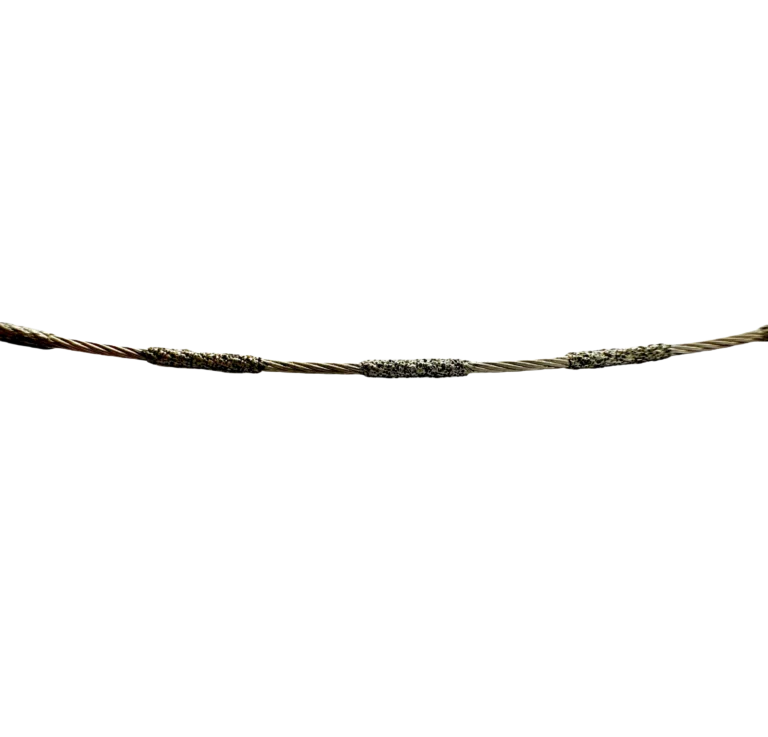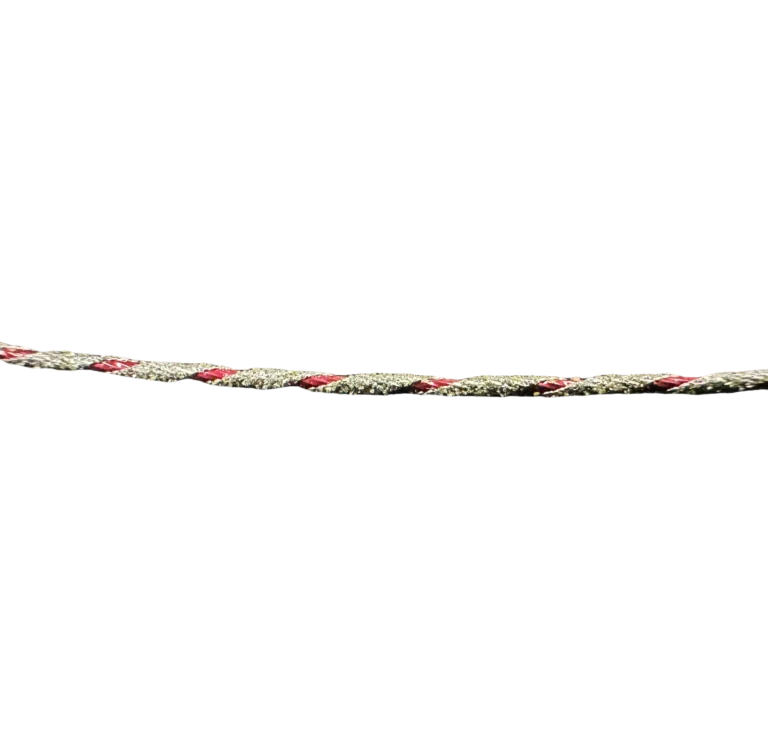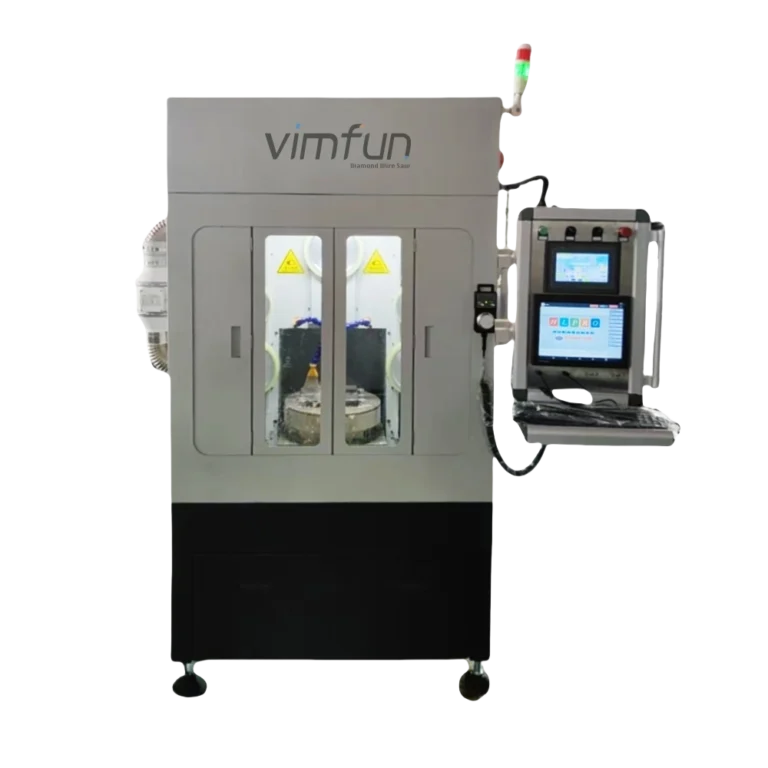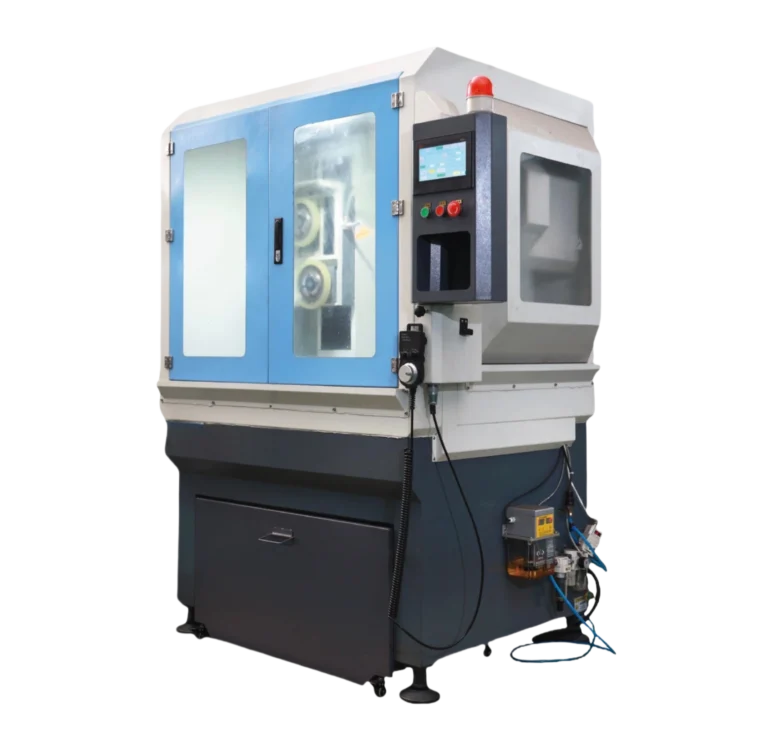Cutting ultra-hard materials such as sapphire, quartz, ceramic and optical glass has always been a challenge. Traditional bite tools often create cracks, waste materials, and leave thick edges. This is the place where the field connectable diamond wire loop comes. This modern cutting solution is designed to provide smooth, accurate and efficient cuts without damaging the workpiece. Whether you work in optics, electronics, or scientific research, this technique provides a reliable and cost-effective way to handle the most difficult materials.
Best Diamond Wire Loop – Easy field connection
Field Connectable Diamond Wire Loop is a smart and powerful cutting tool. It is designed to join a closed loop at your workplace. This is perfect for jobs where it cannot be reached outside the workpiece. You can use it to cut internal holes, slots or chambers inside large blocks of graphite, ceramic or overall materials.

Le présent diamond wire loop for hard materials is very easy to use. You can cut it to the length you need and then connect it to a special crimping tool. This lets you insert through a small pilot hole and close the loop inside the workpiece. This is the best option to create blind slots or internal profiles.
Le easy-to-install diamond wire loop has a fragmented diamond coating that easily cuts and removes chips while cutting. This prevents the wire from closing and gives you a clean finish. Its strong metal core can handle high stress, which makes it even longer in heavy-duty jobs.
You can also choose the correct length and spacing of diamond segments. This makes the wire flexible for many different cutting requirements. This helps to save time, reduce waste and give the right results every time.
How Diamond Wire Loops Work in Precision Cutting
A field connectable diamond wire loop is a continuous loop of coated wire with industrial diamonds. These tiny diamond particles act as the cutting edge. The field-installable diamond cutting wire is applied to a machine and moves at a constant speed. When the loop contacts the content, the diamonds grow gradually but accurately through it.
The cutting process uses minimum force, which prevents cracks and chipping. Unlike traditional saw blades, which use teeth to cut, removes the material layer by the diamond wire loop layer, producing very smooth surfaces. The constant speed of the loop also ensures that wear on the wire, which keeps the quality of cutting consistent in its lifetime.
Major features of a diamond wire loop
A good diamond wire loop is designed to last long and perform with high precision. One of the major features is a uniform diamond distribution on the wire. This allows the wire to be cut evenly and reduces the possibility of the wire breaking.
Another feature is flexibility. The wire loop must be strong enough to cut into hard material, but should be flexible enough to handle complex shapes. Field connectable diamond wire loops are designed to oppose stretching, which keeps the cutting dimensions accurate.
Many modern loops are fieldable, which means that they can be included directly on the site without sending them back to the factory for repair or replacement. This saves time and reduces downtime in the production environment.
Precision diamond wire loop tools are corrosion-resistant and work with a variety of coolants or cutting fluids. This allows them to use them in various environments and for a wide range of applications.
Benefits of Using Diamond Wire Loops in Hard Material Cutting
One of the biggest benefits of using a diamond wire loop is accuracy. Because the cutting is very smooth and controlled, the surface is finished excellently, often eliminating the need for secondary grinding or shining.
Another benefit is material savings. Since the wire is very thin, the kerf (the ingredients removed during cutting) is very small. This means that you can get more pieces from a single block of materials, reduce waste and save costs.
The industrial diamond wire cutting loop also provides long service life. Their continuous loop design means that the wire wears equally, which allows them to last longer than many other cutting tools.
Low vibration and low cutting forces protect both machine and material. This is particularly important when working with delicate materials such as ceramic or optical glass that can easily crack under pressure.
Using a field connectable diamond wire loop means that you can easily replace or repair the loop without interrupting production. It improves efficiency and keeps projects on time.
Applications of Field Connectable Diamond Wire Loops

Field connectable diamond wire loops are used in many industries. In the optics industry, they are used to cut lenses, prisms and other optical components with extreme precision. A smooth cut here is important because no surface can affect the defect of how the light passes through the material.
In the electronics industry, these loops are used to slice wafers made of silicon carbide or sapphire. These wafers are later used in semiconductors, LEDs and other electronic components. Accurate cutting ensures that wafers are similar in thickness, which is important for performance.
In the scientific research field, a connectable diamond wire for wafers is used to prepare samples of brittle material for analysis. Clean, accurate cuts help researchers to study the internal structure of materials under the microscope.
They are also used in aerospace, photonics and laser systems, where mission-mating applications require high-quality materials. The ability to cut complex shapes with accuracy makes them a top option for engineers and scientists.
Materials Used for Diamond Wire Loop Manufacturing
The performance of the diamond wire loop depends largely on the materials used to make it. The core wire is usually made from high-power steel or other metal alloys. This gives strength to withstand high stress while cutting the wire.
Diamond coating is made of industrial-grade synthetic diamonds. These diamonds are chosen for their hardness and the ability to bite. Diamonds are tied to wire using advanced electroplating or sintering techniques, which ensure that they are also attached under heavy use.
In some cases, special resin or metal bonds are used to keep the diamonds in place, which allows for more controlled cutting action. The option of a bond depends on the type of material and the type of desired surface finish.
Choosing the high-performance diamond wire loop
Choosing the right field connectable diamond wire loop depends on many factors.
- Consider the type of material you need to cut. The rigid material may require a wire with a high concentration of diamonds or a strong bond. A soft or more brittle material may require a wire with fine patience to prevent surface damage.
- Think about the cutting speed you need. Rapid cuttings may require a different wire specification compared to slow, accurate cuttings.
- You should also consider the length and diameter of the loop which supports your machine. Using the incorrect size can cause poor performance or damage to your devices.
- Look for a supplier who provides field-connectable loops and provides assistance if you need help in choosing the right product. A reliable supplier can save you time, reduce waste and ensure frequent results.
Strong Field Connectable Diamond Wire Loop Supplier
When it comes to finding a reliable supplier for field connectable diamond wire loops, Vimfun is one of the leading names in the industry. They are a high-tech manufacturer focused on developing and producing advanced diamond wire cutting equipment. Their products are designed to cut optical glass, sapphire, quartz and other ultra-hard or brittle materials.
Solutions of VimFun are widely used in optics, photonics, infrared imaging, laser systems and scientific research. They are known for their strong R&D abilities, strict quality control and commitment to customer satisfaction. Choosing Vimfun means that you get reliable products, professional technical support and advanced solutions that help you get the best cutting results.




